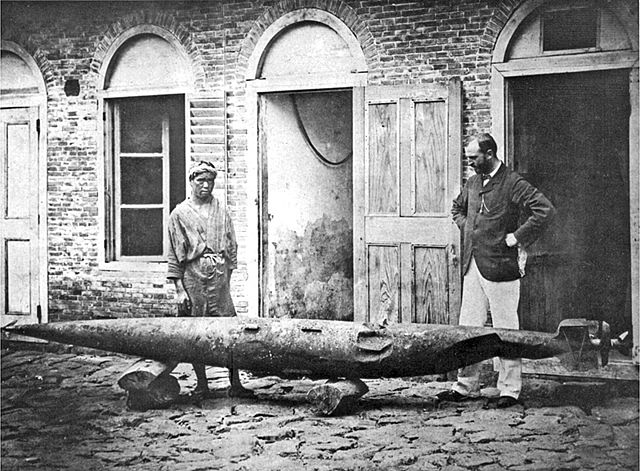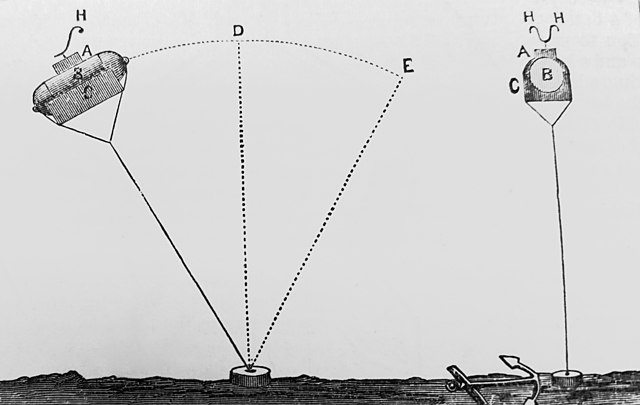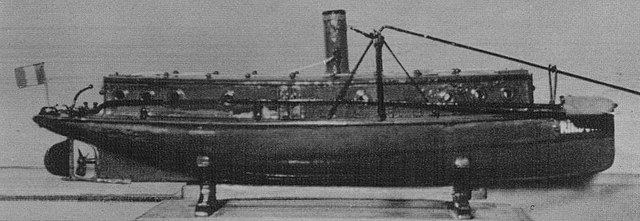The Whitehead torpedo was the first self-propelled or "locomotive" torpedo ever developed. It was perfected in 1866 by British engineer Robert Whitehead from a rough design conceived by Giovanni Luppis of the Austro-Hungarian Navy in Fiume. It was driven by a three-cylinder compressed-air engine invented, designed, and made by Peter Brotherhood. Many naval services procured the Whitehead torpedo during the 1870s, including the US Navy. This early torpedo proved itself in combat during the Russo-Turkish War when, on 16 January 1878, the Ottoman ship Intibah was sunk by Russian torpedo boats carrying Whiteheads, though this story has been disputed in one book.
Whitehead torpedo mechanism, published 1891
Robert Whitehead with a battered test torpedo, Fiume (today's Croatia), c.1875
Argentinian sailors with a Whitehead torpedo, Fiume, Austria, 1888
Whitehead torpedo's general profile, as illustrated in The Whitehead Torpedo manual, published by the US Navy in 1898: A. war-head B. air-flask. B'. immersion-chamber CC'. after-body C. engine-room DDDD. drain-holes E. shaft-tube F. steering-engine G. bevel-gear box H. depth-index I. tail K. charging and stop-valves L. locking-gear M. engine bed-plate P. primer-case R. rudder S. steering-rod tube T. guide-stud UU. propellers V. valve-group W. war-nose Z. strengthening-band
A modern torpedo is an underwater ranged weapon launched above or below the water surface, self-propelled towards a target, and with an explosive warhead designed to detonate either on contact with or in proximity to the target. Historically, such a device was called an automotive, automobile, locomotive, or fish torpedo; colloquially a fish. The term torpedo originally applied to a variety of devices, most of which would today be called mines. From about 1900, torpedo has been used strictly to designate a self-propelled underwater explosive device.
Bliss–Leavitt Mark 8 torpedo
Fulton's torpedo
Confederates laying naval mines in Charleston Harbor
NMS Rândunica








